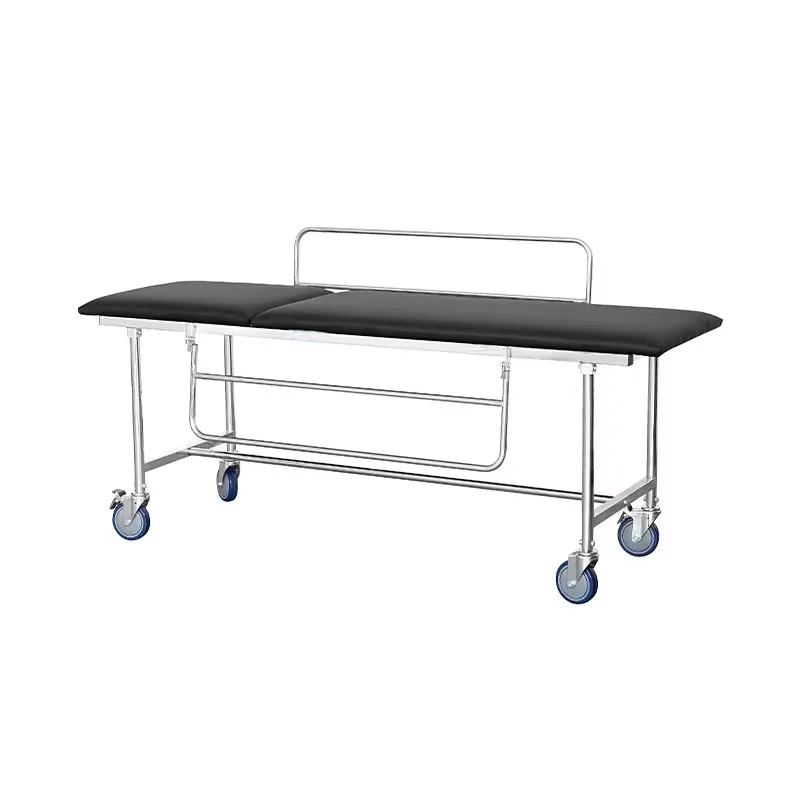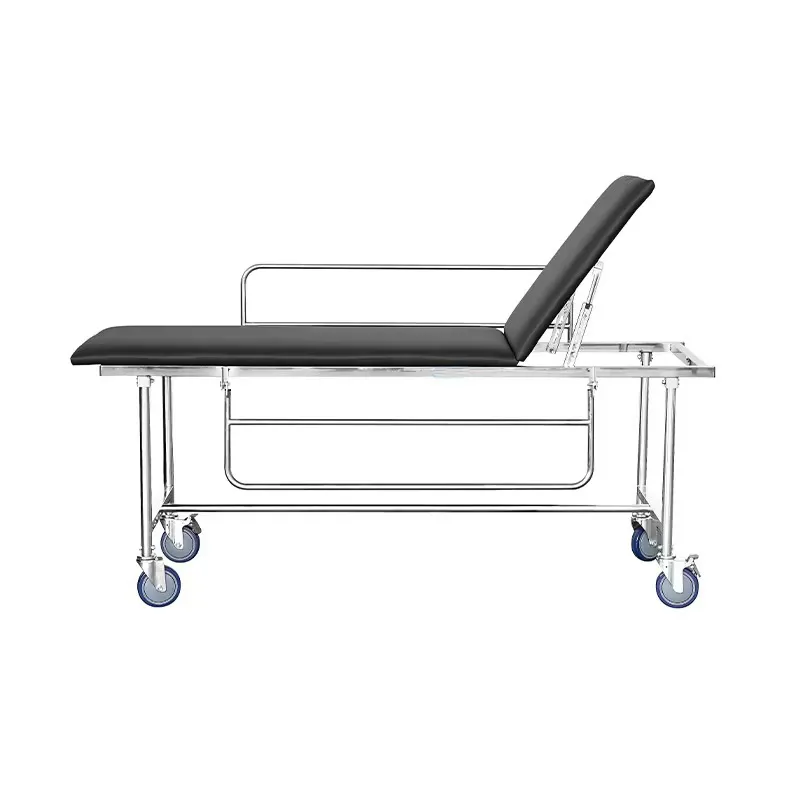Patient Trolley – Durable, Ergonomic, Safe Mobility
Stainless Steel Emergency Patient Transport Stretcher – field notes from the floor
If you’ve ever hustled down a corridor at 3 a.m., you already know why a good patient trolley matters. This model—“Stainless Steel Emergency Patient Transport Stretcher Patient Trolley”—comes out of Zhouhu Village, Jizhou Zone, Hengshui City, Hebei Province, China, and it’s clearly designed by folks who’ve spent time listening to nurses and porters. Stainless steel frame, adjustable backrest, long-side rails, big castors you can actually steer, and a washable mattress. Also detachable, which, surprisingly, saves a lot on shipping (and makes doorways less of a drama).

What’s trending in trolleys (yes, there are trends)
Hospitals are asking for corrosion-proof frames (goodbye chipping paint), tool-free maintenance, and quieter wheels. In fact, many customers say the noise reduction alone changes the night shift vibe. Compliance is another keyword—ambulance teams look for EN 1865 alignment, and procurement teams increasingly want ISO 13485-backed quality systems. To be honest, the “buy once, cry once” mindset is back.
Core specs at a glance
| Parameter | Specification (≈ values; real-world use may vary) |
|---|---|
| Frame material | SUS304 stainless steel, brushed finish |
| Overall size | L ≈ 1950–2050 mm; W ≈ 600–650 mm; H ≈ 820 mm (fixed) |
| Backrest adjustment | 0–70° manual crank |
| Side rails | Full-length stainless steel, lockable |
| Castors | Ø 150 mm, hospital-grade, optional central brake |
| Mattress | Washable/disinfectable cover, thickness ≈ 60–80 mm |
| Safe working load | ≈ 200–220 kg; static tested at 1.5× load |
| Structure | Detachable for lower transport costs |

Where it shines
- ED and imaging transfer: quick backrest tilt helps during triage and post-scan.
- Day surgery: easy wipe-down between cases.
- Ambulance bays: robust rails and big wheels make curb transitions less dicey.
- Isolation wards: stainless surfaces tolerate aggressive disinfection protocols.
Advantages? Corrosion resistance, predictable steering, and fewer crevices for bio-burden. I guess the quiet castors are an underrated win.
Build process, testing, and service life
Materials: SUS304 tube and sheet; high-frequency TIG/MIG welds; brushed deburring on all edges. Methods: fixture welding for squareness, torque-checked fasteners, and 100% functional checks on rails/brakes. Testing: static load at 1.5× SWL for 10 min; dynamic roll test ≈ 20,000 cycles; salt-spray (ASTM B117) ≈ 72 h on representative panels; castor swivel/brake endurance. Service life: around 8–10 years with annual caster/brake service and mattress replacement as needed.

Vendor snapshot (procurement cheat-sheet)
| Vendor | Frame | SWL | Castors | Standards footprint | Price (≈) | Lead time |
|---|---|---|---|---|---|---|
| Zhaofa Med | SUS304 | 200–220 kg | 150 mm, central-brake optional | ISO 13485, EN 1865 alignment | Mid | 3–5 weeks |
| Imported A | Powder-coated steel | 180–200 kg | 125 mm | EN 1865, EN 1789 | High | 6–10 weeks |
| Budget B | Mixed steel | ≈ 160 kg | 100–125 mm | Basic QA | Low | 2–4 weeks |
Customization and real-world feedback
Options: logo engraving, rail style (drop-down vs flip-up), 125/150/200 mm wheels, IV pole, oxygen holder, anti-static mattress covers, and central-brake kits. One ED nurse told me the larger wheels “made ramps a non-event.” Another user liked the detachable frame—maintenance could swap parts without hunting for special tools.
Mini case study
A county hospital upgraded 12 units of this patient trolley for their day-surgery wing. After 3 months, their cleaning team logged a 22% reduction in turnaround time (fewer dirt traps), and porters reported fewer brake adjustments. Not a controlled trial, sure, but the trend looked solid.

Compliance notes and test data
Quality system under ISO 13485; risk management referencing ISO 14971; stretcher geometry and load practices aligned with EN 1865; ambulance interface awareness per EN 1789 (where applicable). Mattress contact surfaces follow ISO 10993 guidance for biocompatibility. Internal lab data: static load 330 kg (10 min, no deformation); dynamic roll 20,000 cycles; salt-spray 72 h—no red rust on SS304.
References:
1. EN 1865-1: Patient handling equipment for road ambulances.
2. ISO 13485: Medical devices — Quality management systems.
3. ISO 14971: Medical devices — Application of risk management.
4. EN 1789: Medical vehicles and their equipment.
5. ISO 10993-1: Biological evaluation of medical devices.
6. ASTM B117: Standard Practice for Operating Salt Spray (Fog) Apparatus.




































